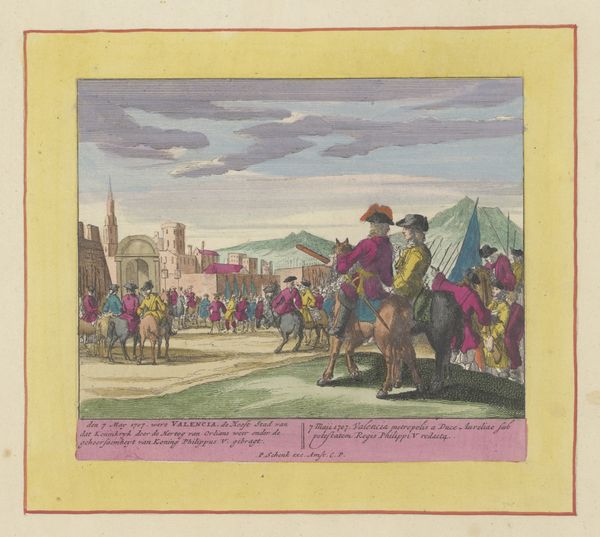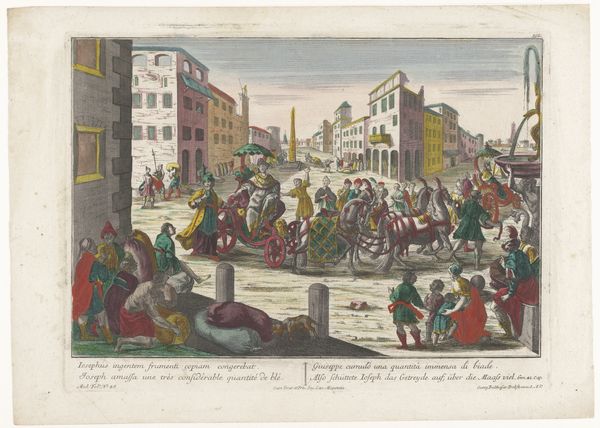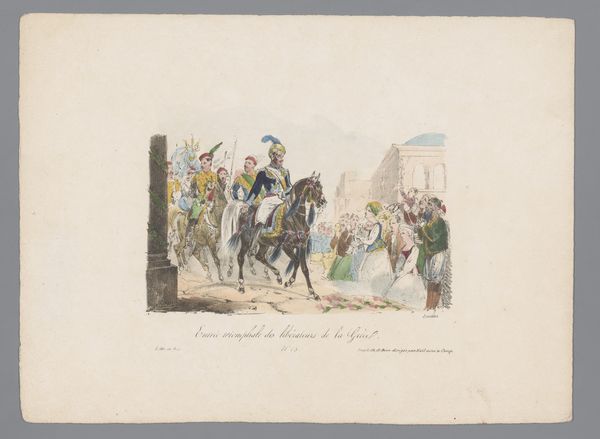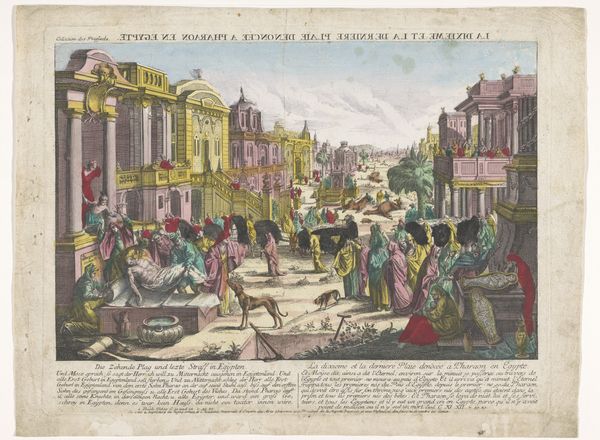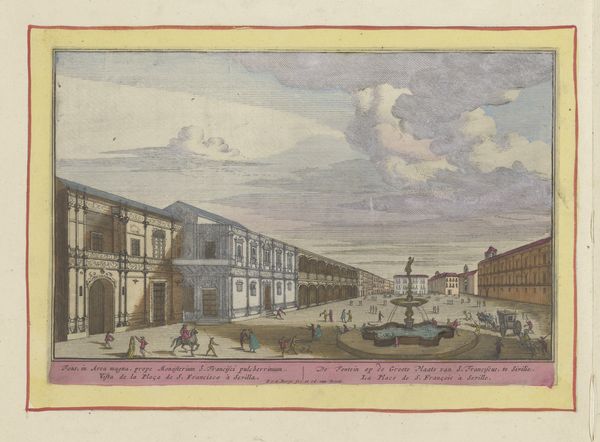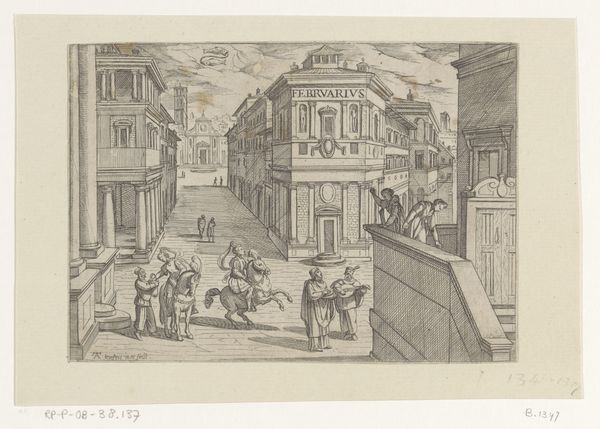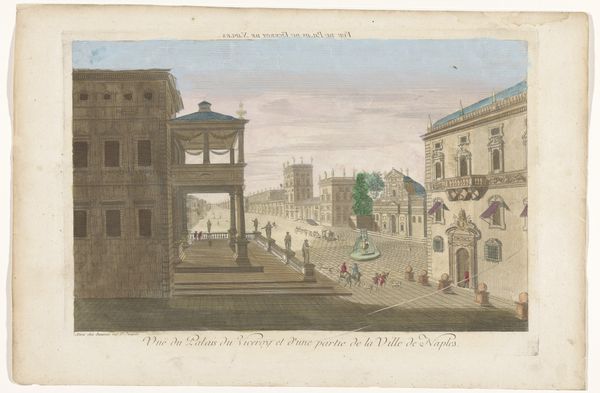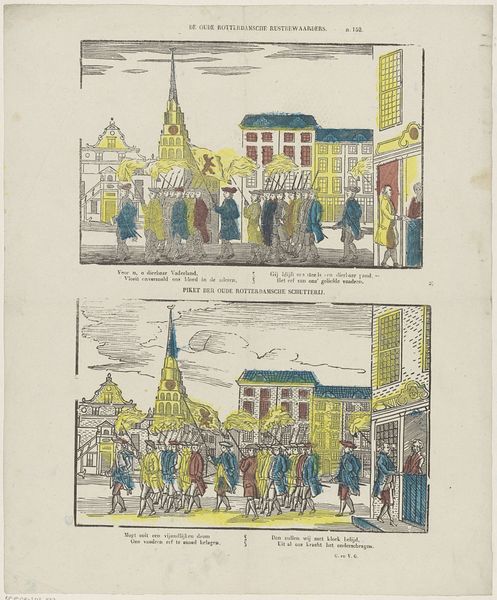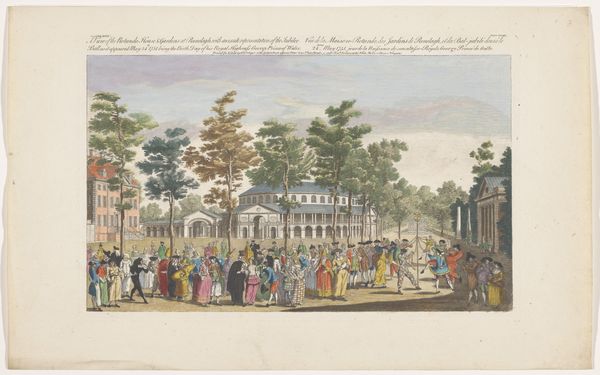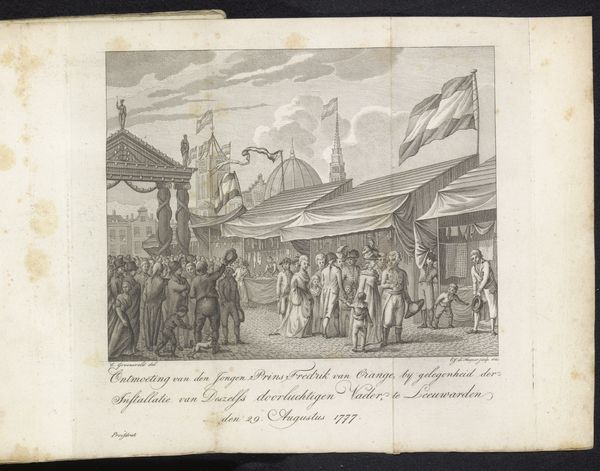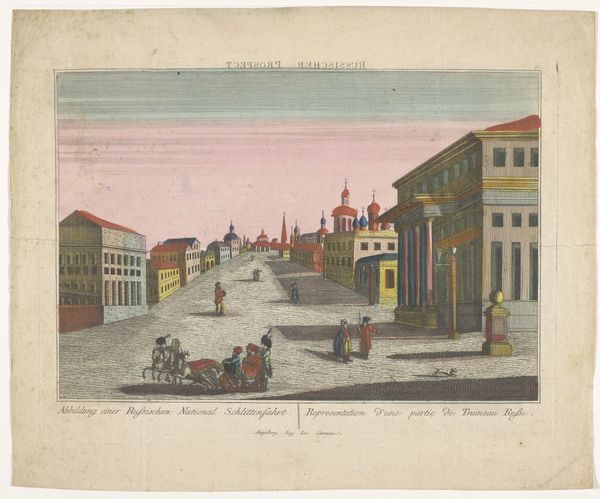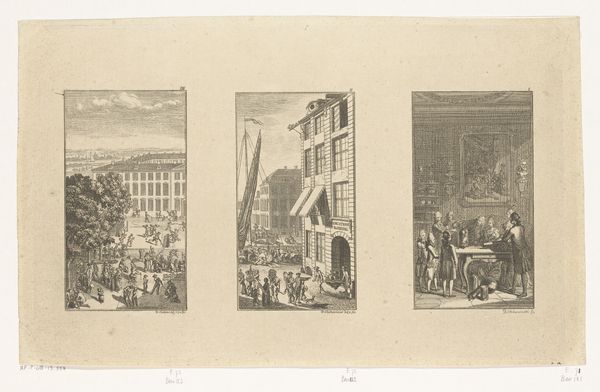
print, engraving
#
baroque
# print
#
cityscape
#
watercolour illustration
#
history-painting
#
engraving
Dimensions: height 150 mm, width 179 mm
Copyright: Rijks Museum: Open Domain
Editor: Here we have Pieter Schenk's "Entry of King Philip V of Spain into Madrid, 1701," an engraving from sometime between 1706 and 1720. It's quite small and the colors are delicate, almost pastel. It feels very controlled and formal, befitting the subject, I suppose. What catches your eye when you look at it? Curator: I am immediately struck by the geometrical arrangement of the figures and architecture. Note how the artist uses the strong verticals of the buildings and the spears to create a structured space. Do you observe the contrast between the linear procession and the rounded forms of the arches and figures? Editor: Yes, now that you point it out, the straight lines of the buildings really do draw your eye. And how the people on horseback curve to either side. Curator: Precisely. Furthermore, consider the interplay between light and shadow. Schenk employs hatching and cross-hatching to define the forms and create a sense of depth. It is particularly evident on the figures' clothing and the architectural details, instilling a subtle sense of volume within the graphic space. Notice also how the color subtly emphasizes this contrast. What feelings does this provoke? Editor: I think that because it’s not overly dramatic or contrast-heavy, it actually enforces that sense of order and control I felt when I first saw the print. Almost like a stage set. Curator: An excellent observation. And the limited color palette further unifies the composition, directing our focus towards the formal arrangement of elements rather than any extraneous details. A print such as this serves as a carefully constructed representation, prioritizing form and structure over expressive freedom. Editor: It's amazing how much you can glean from focusing on just the formal elements! It definitely makes me appreciate the skill in crafting even seemingly simple images. Curator: Indeed. The value of formalism lies in its ability to unlock these observations, giving us a grammar to read images closely, analytically.
Comments
No comments
Be the first to comment and join the conversation on the ultimate creative platform.
